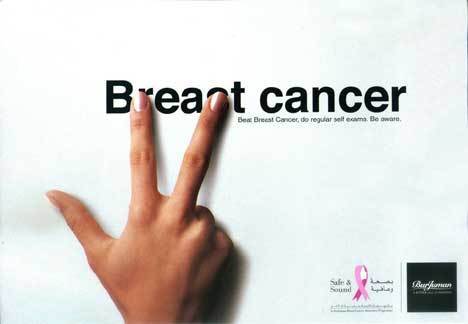 “Why me?” Many people ask this question when diagnosed with cancer, which claims the lives of more than half a million Americans every year, according to the Center for Disease Control’s Leading Causes of Death report (2016). One out of every four deaths in the U.S. is due to cancer, making it the second leading cause of death in the United States. These numbers continue to increase every year which is why taking preventative measures, staying current on screenings, and maintaining a healthy lifestyle is more important than ever (Leading Causes of Death, 2016).
“Why me?” Many people ask this question when diagnosed with cancer, which claims the lives of more than half a million Americans every year, according to the Center for Disease Control’s Leading Causes of Death report (2016). One out of every four deaths in the U.S. is due to cancer, making it the second leading cause of death in the United States. These numbers continue to increase every year which is why taking preventative measures, staying current on screenings, and maintaining a healthy lifestyle is more important than ever (Leading Causes of Death, 2016).
In 2016, it is estimated there will be around 246,660 new cases of invasive breast cancer and 40,450 breast cancer deaths (Breast Cancer, 2016). At the Sulzbacher Beaches Clinic, where I serve as a Patient Navigator for the NHC Florida AmeriCorps Program, mammogram screening referrals help increase the number of patients who seek preventative health measures, and there are programs in place to help patients who can’t afford screenings as well. For example, the Florida Breast and Cervical Cancer Early Detection Program is funded by the National Breast and Cervical Cancer Early Detection Program, which is administered by the CDC. In addition, We Care Jacksonville provides specialty care funded by the City of Jacksonville Public Service Grants, and the J. Wayne & Delores Barr Weaver Advised Fund. Through these programs, medically underserved and low-income patients are able to get free mammogram screenings, and patients with abnormal exams receive further care coordination.
 Unfortunately, I have witnessed several patients develop malignancy, many of whom most likely never would have been able to get regular screenings due to cost. Since early detection is key to recovery, routine mammograms can greatly reduce one’s risk of dying from breast cancer. The CDC recommends that women of average risk ages 50-74 years old should have a screening mammogram every two years; women who have above average risk may want to ask their doctor about getting screened sooner (Breast Cancer, 2016). The programs implemented at Sulzbacher have changed patients’ lives, reduced future life-threatening situations, and eased the burden of unaffordable medical bills. Aiding in these preventative health programs has made me realize how important it is to continue promoting self-awareness, and to help spread factual information and education.
Unfortunately, I have witnessed several patients develop malignancy, many of whom most likely never would have been able to get regular screenings due to cost. Since early detection is key to recovery, routine mammograms can greatly reduce one’s risk of dying from breast cancer. The CDC recommends that women of average risk ages 50-74 years old should have a screening mammogram every two years; women who have above average risk may want to ask their doctor about getting screened sooner (Breast Cancer, 2016). The programs implemented at Sulzbacher have changed patients’ lives, reduced future life-threatening situations, and eased the burden of unaffordable medical bills. Aiding in these preventative health programs has made me realize how important it is to continue promoting self-awareness, and to help spread factual information and education.
Many risk factors for breast cancer are related to lifestyle, while some are the simple result of a bad spin on the genetics wheel. Examples of how to lower your risk for breast cancer are as follows:
• Maintain a healthy weight
• Exercise regularly (at least 150 minutes/week of moderate activity)
• Get plenty of rest
• Don’t drink alcohol, or limit to one drink/day
• Don’t smoke and stay away from drugs/chemicals
• Breastfeed children, if possible
 According to the American Cancer Society, “About 1 in 8 (12%) women in the US will develop invasive breast cancer during their lifetime” (Breast Cancer Key Statistics, 2016). Prevention and early detection is less costly and has a better prognosis than a late-stage diagnosis. Ask your doctor for recommendations, get yearly check-ups, know your risks, and maintain a healthy lifestyle!
According to the American Cancer Society, “About 1 in 8 (12%) women in the US will develop invasive breast cancer during their lifetime” (Breast Cancer Key Statistics, 2016). Prevention and early detection is less costly and has a better prognosis than a late-stage diagnosis. Ask your doctor for recommendations, get yearly check-ups, know your risks, and maintain a healthy lifestyle!
References
Breast Cancer. (2016). Retrieved June 23, 2016, from https://www.cdc.gov/cancer/breast/index.htm
Leading Causes of Death. (2016). Retrieved June 23, 2016, from http://www.cdc.gov/nchs/fastats/leading-causes-of-death.htm
Breast Cancer Key Statistics (2016). Retrieved July 13, 2016, from
http://www.cancer.org/cancer/breastcancer/detailedguide/breast-cancer-ke...
This blog post was written by NHC Florida member Sam Silsbee.
Sam serves at the Sulzbacher Beaches Clinic as a Patient Navigator.
